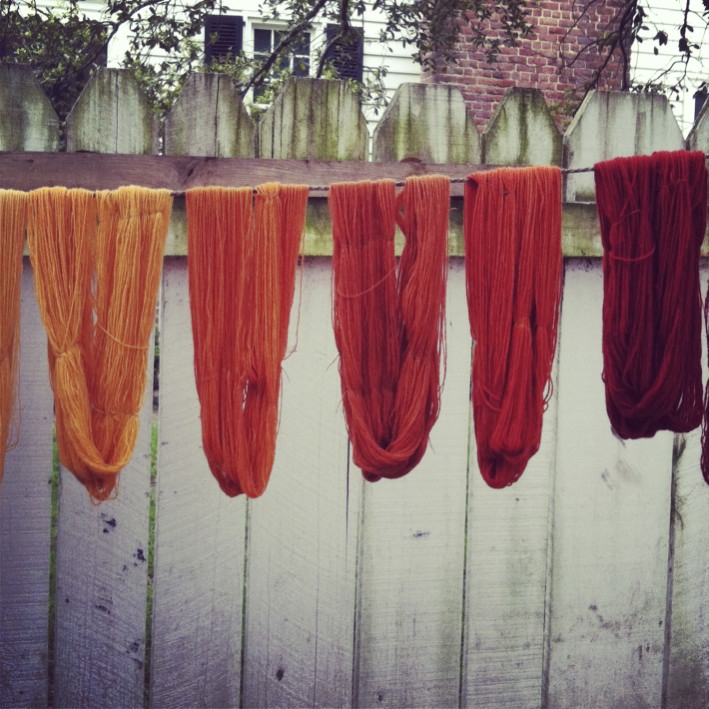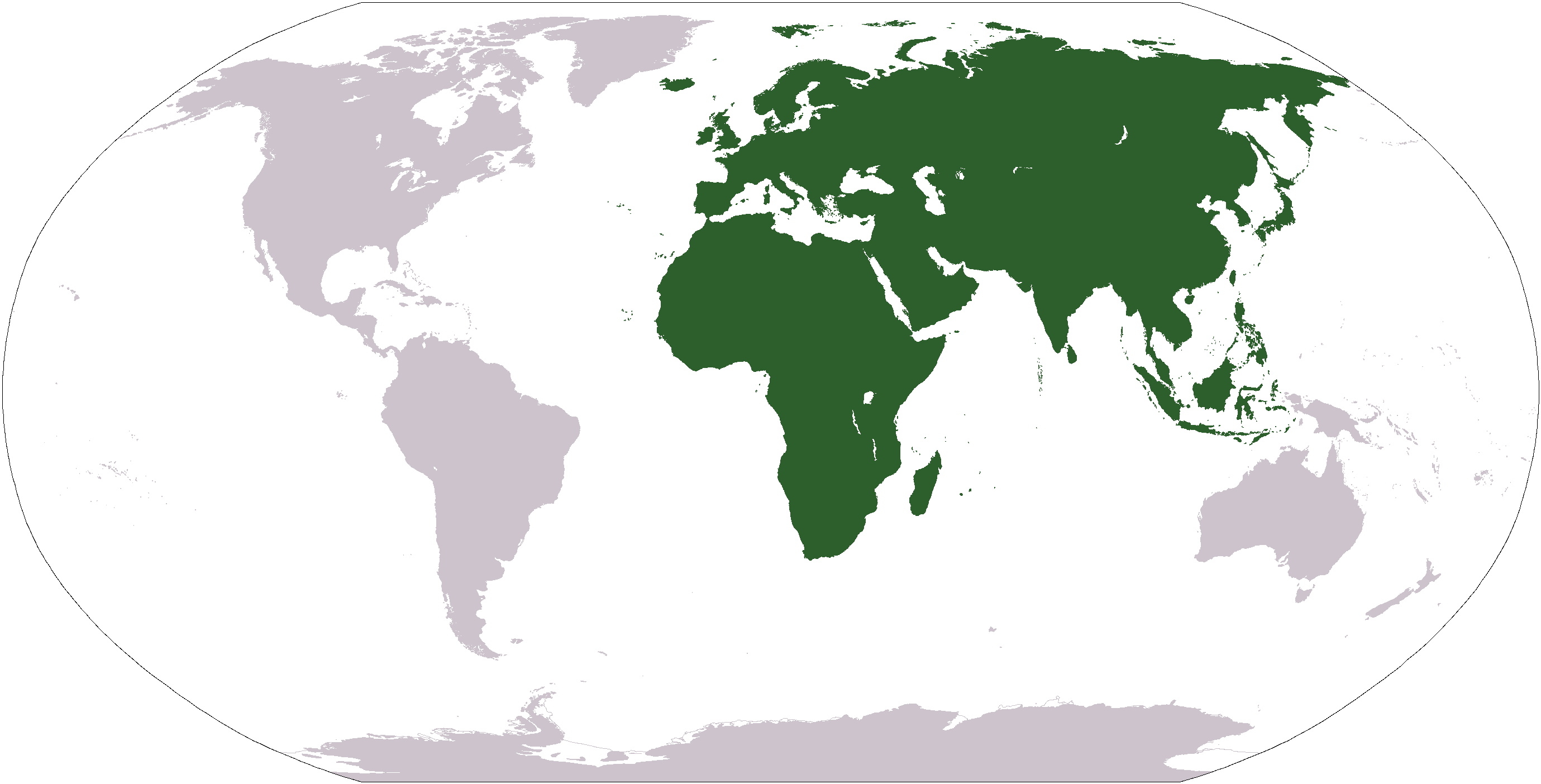|
Rubia
''Rubia'' is the type genus of the Rubiaceae family of flowering plants, which also contains ''Coffea'' (coffee). It contains around 80 species of perennial scrambling or climbing herbs and subshrubs native to the Old World. The genus and its best-known species are commonly known as madder, e.g. ''Rubia tinctorum'' (common madder), '' Rubia peregrina'' (wild madder), and '' Rubia cordifolia'' (Indian madder). Uses ''Rubia'' was an economically important source of a red pigment in many regions of Asia, Europe and Africa. The genus name ''Rubia'' derives from the Latin ' meaning "red". The plant's roots contain an anthracene compound called alizarin that gives its red colour to a textile dye known as Rose madder. It was also used as a colourant, especially for paint, that is referred to as Madder lake. The synthesis of alizarin greatly reduced demand for the natural compound. In Georgia and Armenia, Rubia is used for dying Easter eggs red. History Several species, such a ... [...More Info...] [...Related Items...] OR: [Wikipedia] [Google] [Baidu] |
Rubiaceae
Rubiaceae () is a family (biology), family of flowering plants, commonly known as the coffee, madder, or bedstraw family. It consists of terrestrial trees, shrubs, lianas, or herbs that are recognizable by simple, opposite leaves with Petiole (botany), interpetiolar stipules and sympetalous actinomorphic flowers. The family contains about 14,100 species in about 580 genera, which makes it the fourth-largest angiosperm family. Rubiaceae has a cosmopolitan distribution; however, the largest species diversity is concentrated in the tropics and subtropics. Economically important genera include ''Coffea'', the source of coffee; ''Cinchona'', the source of the antimalarial alkaloid quinine; ornamental cultivars (''e.g.'', ''Gardenia'', ''Ixora'', ''Pentas''); and historically some dye plants (''e.g.'', ''Rubia''). Description The Rubiaceae are morphologically easily recognizable as a coherent group by a combination of characters: opposite or whorled leaves that are simple and entire, ... [...More Info...] [...Related Items...] OR: [Wikipedia] [Google] [Baidu] |
Rubia Tinctorum
''Rubia tinctorum'', the rose madder or common madder or dyer's madder, is a herbaceous perennial plant species belonging to the bedstraw and coffee family Rubiaceae. Description The common madder can grow up to 1.5 m in height. The evergreen leaves are approximately 5–10 cm long and 2–3 cm broad, produced in whorls of 4–7 starlike around the central stem. It climbs with tiny hooks at the leaves and stems. The flowers are small (3–5 mm across), with five pale yellow petals, in dense racemes, and appear from June to August, followed by small (4–6 mm diameter) red to black berries. The roots can be over a metre long, up to 12 mm thick and are the source of red dyes known as rose madder and Turkey red. It prefers loamy soils (sand and clay soil) with a constant level of moisture, as well as creek beds. Madder is used as a food plant by the larvae of some Lepidoptera species including the hummingbird hawk moth. Uses It has been used since anc ... [...More Info...] [...Related Items...] OR: [Wikipedia] [Google] [Baidu] |
Rubia Cordifolia
''Rubia cordifolia'', known as Indian madder, is a species of flowering plant in the coffee family, Rubiaceae. It has been cultivated for a red pigment derived from roots. Description It can grow to 3.5 m in height. The evergreen leaves are usually lanceolate or ovate and are 1.5–4 cm long and 0.5–1.5 cm broad, produced in whorls of 4-8 starlike around the central stem. It climbs with tiny hooks at the leaves and stems. The flowers are small (3–5 mm across), with five pale yellow petals, in dense racemes, arranged in a panicle. They consist of several to many flowers, found at both the ends of branches and in the leaf axils. The flowers appear from August to September, followed by small (4–6 mm diameter) red to black berries from October to November. The roots can be over 1 m long, up to 12 mm thick. It prefers loamy soils with a constant level of moisture. Madders are used as food plants for the larvae of some Lepidoptera species including Hummi ... [...More Info...] [...Related Items...] OR: [Wikipedia] [Google] [Baidu] |
Rubia Argyi
''Rubia argyi'' is a species of flowering plant of the family Rubiaceae. Its common name In biology, a common name of a taxon or organism (also known as a vernacular name, English name, colloquial name, country name, popular name, or farmer's name) is a name that is based on the normal language of everyday life; and is often con ...s may include East Asian madder. It occurs in southern and eastern China, Taiwan, Japan, and Korea. ''Rubia argyi'' is a herbaceous, perennial vine. The stem can grow to a length of or more. References argyi Flora of Eastern Asia Flora of China Plants described in 1908 {{Rubiaceae-stub ... [...More Info...] [...Related Items...] OR: [Wikipedia] [Google] [Baidu] |
Coffea
''Coffea'' is a genus of flowering plants in the family Rubiaceae. ''Coffea'' species are shrubs or small trees native to tropical and southern Africa and tropical Asia. The seeds of some species, called coffee beans, are used to flavor various beverages and products. The fruits, like the seeds, contain a large amount of caffeine, and have a distinct sweet taste. The plant ranks as one of the world's most valuable and widely traded commodity crops and is an important export product of several countries, including those in Central and South America, the Caribbean and Africa. The coffee trade relies heavily on two of the over 120 species, ''Coffea arabica'' (commonly known simply as "Arabica"), which accounts for 60–80% of the world's coffee production, and ''Coffea canephora'' (known as " Robusta"), which accounts for about 20–40%. Both coffee species are vulnerable to shifts, caused by climate change, in their growing zones, which are likely to result in a decline in pr ... [...More Info...] [...Related Items...] OR: [Wikipedia] [Google] [Baidu] |
Madder Lake
Alizarin (also known as 1,2-dihydroxyanthraquinone, Mordant Red 11, C.I. 58000, and Turkey Red) is an organic compound with formula that has been used throughout history as a red dye, principally for dyeing textile fabrics. Historically it was derived from the roots of plants of the madder genus.The primary madder species from which alizarin historically has been obtained is '' Rubia tinctorum''. See also In 1869, it became the first natural dye to be produced synthetically. Alizarin is the main ingredient for the manufacture of the madder lake pigments known to painters as rose madder and alizarin crimson. Alizarin in the most common usage of the term has a deep red color, but the term is also part of the name for several related non-red dyes, such as Alizarine Cyanine Green and Alizarine Brilliant Blue. A use of alizarin in modern times is as a staining agent in biological research because it stains free calcium and certain calcium compounds a red or light purple color. ... [...More Info...] [...Related Items...] OR: [Wikipedia] [Google] [Baidu] |
Rose Madder
Rose madder (also known as madder) is a red paint made from the pigment madder lake, a traditional lake pigment extracted from the common madder plant '' Rubia tinctorum''. Madder lake contains two organic red dyes: alizarin and purpurin. As a paint, it has been described as a fugitive, transparent, nonstaining, mid valued, moderately dull violet red pigment in tints and medium solutions, darkening to an impermanent, dull magenta red in masstone. History Madder has been cultivated as a dyestuff since antiquity in Central Asia, South Asia, and Egypt, where it was grown as early as 1500 BC. Cloth dyed with madder root dye was found in the tomb of the Pharaoh Tutankhamun and on an Egyptian tomb painting from the Graeco-Roman period, diluted with gypsum to produce a pink color. It was also found in ancient Greece (in Corinth), and in Italy in the Baths of Titus and the ruins of Pompeii. It is referred to in the Talmud as well as mentioned in writings by Dioscori ... [...More Info...] [...Related Items...] OR: [Wikipedia] [Google] [Baidu] |
Alizarin
Alizarin (also known as 1,2-dihydroxyanthraquinone, Mordant Red 11, C.I. 58000, and Turkey Red) is an organic compound with formula that has been used throughout history as a red dye, principally for dyeing textile fabrics. Historically it was derived from the roots of plants of the madder genus.The primary madder species from which alizarin historically has been obtained is '' Rubia tinctorum''. See also In 1869, it became the first natural dye to be produced synthetically. Alizarin is the main ingredient for the manufacture of the madder lake pigments known to painters as rose madder and alizarin crimson. Alizarin in the most common usage of the term has a deep red color, but the term is also part of the name for several related non-red dyes, such as Alizarine Cyanine Green and Alizarine Brilliant Blue. A use of alizarin in modern times is as a staining agent in biological research because it stains free calcium and certain calcium compounds a red or light purple color. ... [...More Info...] [...Related Items...] OR: [Wikipedia] [Google] [Baidu] |
Flowering Plant
Flowering plants are plants that bear flowers and fruits, and form the clade Angiospermae (). The term angiosperm is derived from the Ancient Greek, Greek words (; 'container, vessel') and (; 'seed'), meaning that the seeds are enclosed within a fruit. The group was formerly called Magnoliophyta. Angiosperms are by far the most diverse group of Embryophyte, land plants with 64 Order (biology), orders, 416 Family (biology), families, approximately 13,000 known Genus, genera and 300,000 known species. They include all forbs (flowering plants without a woody Plant stem, stem), grasses and grass-like plants, a vast majority of broad-leaved trees, shrubs and vines, and most aquatic plants. Angiosperms are distinguished from the other major seed plant clade, the gymnosperms, by having flowers, xylem consisting of vessel elements instead of tracheids, endosperm within their seeds, and fruits that completely envelop the seeds. The ancestors of flowering plants diverged from the commo ... [...More Info...] [...Related Items...] OR: [Wikipedia] [Google] [Baidu] |
Old World
The "Old World" () is a term for Afro-Eurasia coined by Europeans after 1493, when they became aware of the existence of the Americas. It is used to contrast the continents of Africa, Europe, and Asia in the Eastern Hemisphere, previously thought of by the Europeans as comprising the entire world, with the "New World", a term for the newly encountered lands of the Western Hemisphere, particularly the Americas. Etymology In the context of archaeology and world history, the term "Old World" includes those parts of the world which were in (indirect) cultural contact from the Bronze Age onwards, resulting in the parallel development of the early civilizations, mostly in the temperate zone between roughly the 45th and 25th parallels north, in the area of the Mediterranean, including North Africa. It also included Mesopotamia, the Persian plateau, the Indian subcontinent, China, and parts of Sub-Saharan Africa. These regions were connected via the Silk Road trade route, and ... [...More Info...] [...Related Items...] OR: [Wikipedia] [Google] [Baidu] |
Armenia (country)
Armenia, officially the Republic of Armenia, is a landlocked country in the Armenian Highlands of West Asia. It is a part of the Caucasus region and is bordered by Turkey to the west, Georgia (country), Georgia to the north and Azerbaijan to the east, and Iran and the Azerbaijani exclave of Nakhchivan Autonomous Republic, Nakhchivan to the south. Yerevan is the Capital city, capital, largest city and Economy of Armenia, financial center. The Armenian Highlands has been home to the Hayasa-Azzi, Shupria and Nairi. By at least 600 BC, an archaic form of Proto-Armenian language, Proto-Armenian, an Indo-European languages, Indo-European language, had diffused into the Armenian Highlands.Robert Drews (2017). ''Militarism and the Indo-Europeanizing of Europe''. Routledge. . p. 228: "The vernacular of the Great Kingdom of Biainili was quite certainly Armenian. The Armenian language was obviously the region's vernacular in the fifth century BC, when Persian commanders and Greek writers ... [...More Info...] [...Related Items...] OR: [Wikipedia] [Google] [Baidu] |


